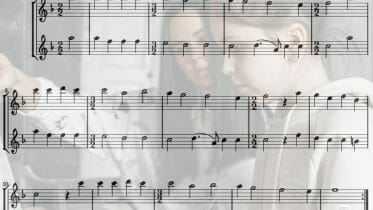
o tannenbaum flute sheet music – G major
Sheet music is a form of musical notation that uses a variety of graphical musical symbols. It helps
We use cookies to help you navigate efficiently and perform certain functions. You will find detailed information about all cookies under each consent category below.
The cookies that are categorized as "Necessary" are stored on your browser as they are essential for enabling the basic functionalities of the site. ...
Necessary cookies are required to enable the basic features of this site, such as providing secure log-in or adjusting your consent preferences. These cookies do not store any personally identifiable data.
Functional cookies help perform certain functionalities like sharing the content of the website on social media platforms, collecting feedback, and other third-party features.
Analytical cookies are used to understand how visitors interact with the website. These cookies help provide information on metrics such as the number of visitors, bounce rate, traffic source, etc.
Performance cookies are used to understand and analyze the key performance indexes of the website which helps in delivering a better user experience for the visitors.
Advertisement cookies are used to provide visitors with customized advertisements based on the pages you visited previously and to analyze the effectiveness of the ad campaigns.
Traditional German sheet music represents a significant aspect of the country’s rich cultural heritage. It embodies the essence of German musical traditions, encompassing diverse genres, styles, and regional variations. This article explores the history, characteristics, and significance of traditional German sheet music, shedding light on its influence on classical music, folk tunes, and the preservation of cultural identity.
Traditional German sheet music has its roots in the Middle Ages and the Renaissance period, with the advent of music notation systems. The development of German sheet music was influenced by various European musical traditions, such as Gregorian chants and the music of the troubadours. The renowned German composer Johann Sebastian Bach played a pivotal role in establishing the foundation of German sheet music.
Traditional German sheet music is known for its meticulous notation, complex harmonies, and precise articulation. It often employs polyphonic textures, with multiple voices interweaving melodically and harmonically. German sheet music also showcases a strong connection to the German language, with lyrics and vocal compositions conveying deep emotions and profound storytelling.
Germany’s diverse regions have given rise to distinct variations in traditional sheet music. For example, Bavaria is renowned for its lively polkas and waltzes, while the Rhineland embraces marching band music. The influence of regional folklore and traditions can be observed in the melodies, rhythms, and instrumentation of these regional variations.
Traditional German sheet music has greatly influenced the development of classical music worldwide. German composers such as Ludwig van Beethoven, Wolfgang Amadeus Mozart, and Franz Schubert drew inspiration from traditional German sheet music, incorporating its rich harmonies, counterpoint, and melodic motifs into their compositions. The German music tradition also paved the way for the development of symphonic, chamber, and operatic forms.
Folk music plays a vital role in German culture, and traditional sheet music captures the essence of these folk tunes and dances. From the lively polkas and waltzes of Bavaria to the contemplative melodies of the Black Forest, traditional German sheet music encapsulates the vibrant spirit and regional diversity of German folk traditions.
Numerous notable composers have contributed to the legacy of German sheet music. From Johann Sebastian Bach’s Baroque masterpieces to the Romantic compositions of Robert Schumann and Johannes Brahms, German composers have left an indelible mark on the world of classical music. Each composer brought their unique style and artistic vision, further enriching the German sheet music tradition.
A wide range of instruments is utilized in traditional German sheet music. The accordion, clarinet, trumpet, violin, and tuba are commonly featured, providing the characteristic sound and timbre associated with German folk and classical music. Traditional ensembles such as brass bands, string quartets, and symphony orchestras bring these compositions to life.
Traditional German sheet music plays a crucial role in preserving the country’s cultural heritage. Through the preservation and performance of traditional compositions, musicians and enthusiasts ensure that the musical traditions, stories, and values of past generations are passed down to future ones. Traditional sheet music connects people with their roots, fostering a sense of cultural identity and belonging.
While traditional German sheet music is deeply rooted in history, it continues to evolve and adapt in modern times. Contemporary musicians and composers draw inspiration from traditional compositions, infusing them with fresh arrangements, interpretations, and contemporary influences. This ongoing revival breathes new life into the traditional German sheet music repertoire.

Sheet music is a form of musical notation that uses a variety of graphical musical symbols. It helps

Sheet music is a written form of music made up of symbols. It helps musicians to play the

sheet music is a handwritten or printed form of music notation that uses modern musical symbols.it helps to